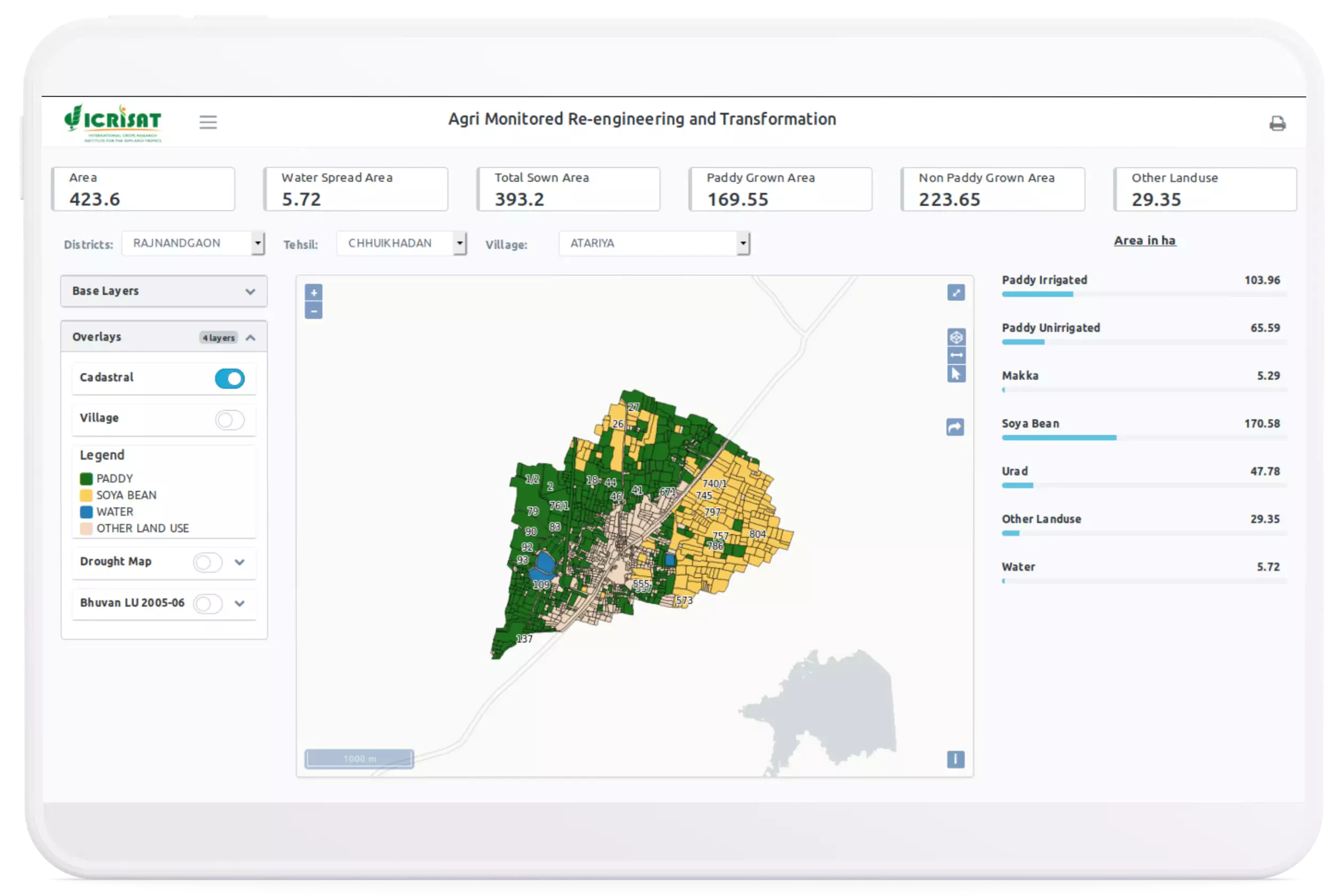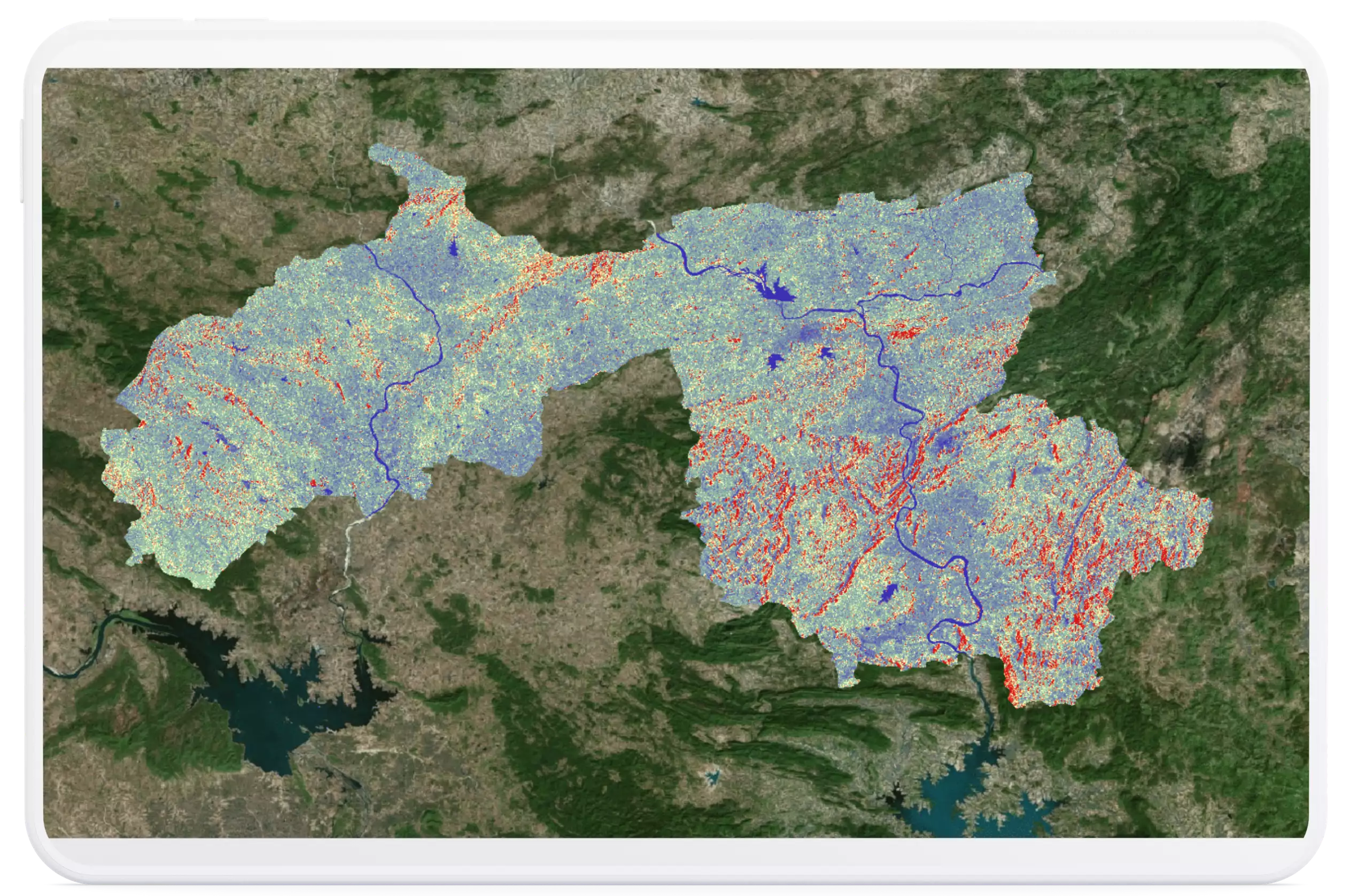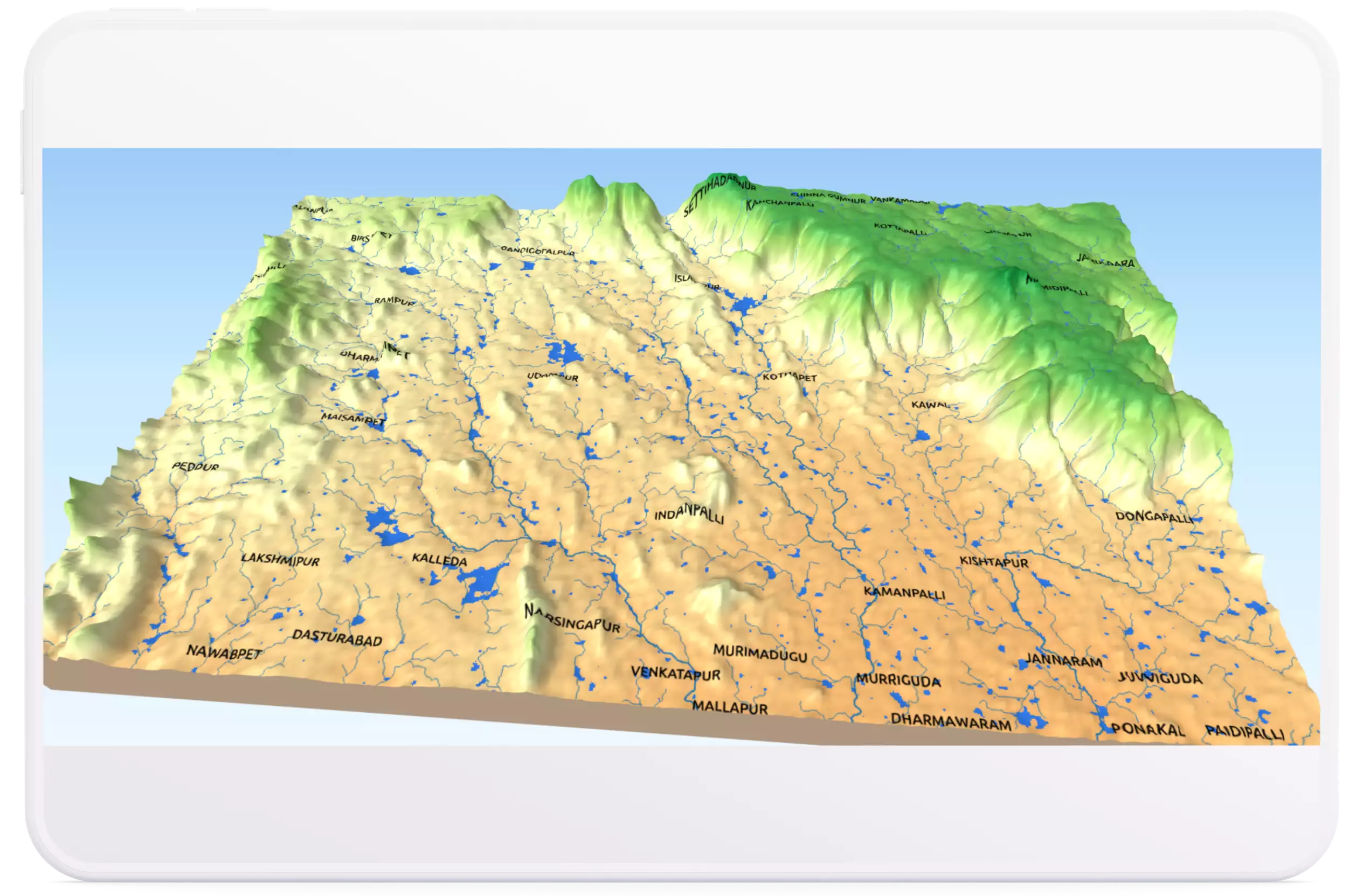Climate resilient agriculture

Growth monitoring
Kaiinos developed a crop monitoring system which helps stakeholders assess the area sown under each crop. The data is updated every 8-10 days and thus enables in understanding the survival rates of different crops. The model now estimates aggregate statistics at block level and is now being fine tuned to work at individual plot level.
This system is built to maximize the utility of satellite data aided with random samples from field during model development. The system uses phenological parameters to identify crops and climate data,physiological parameters to identify health.
Climate
Understanding local micro climatic conditions are important in developing solutions for climate resilient agriculture. Along with weather data coming from automatic weather stations, MODIS data plays an important role in understanding long to medium term climatic conditions of a geography. Kaiinos uses these data sets to build models which aid in understanding ideal climate conditions for agriculture.
Our in house algorithms are good to resample the climatic conditions both at spatial and temporal scales. These data products help us in improving the reliability of the information that is rendered to the end user.


Site suitability
Modern methods of agriculture where irrigation, use of fertilizers and application of pesticides can increase the yield. But natural suitability of a crop to climatic conditions and geographical conditions would reduce the costs involved in farming. On one hand markets are unpredictable and on the other hand weather is unpredictable. Understanding crop suitability in a geography helps in increasing yields and reducing costs.
Kaiinos develops suitability indices for several species of crops in a given locale. These discoveries derived via multiple criteria analysis helps in decision making at farm level.
